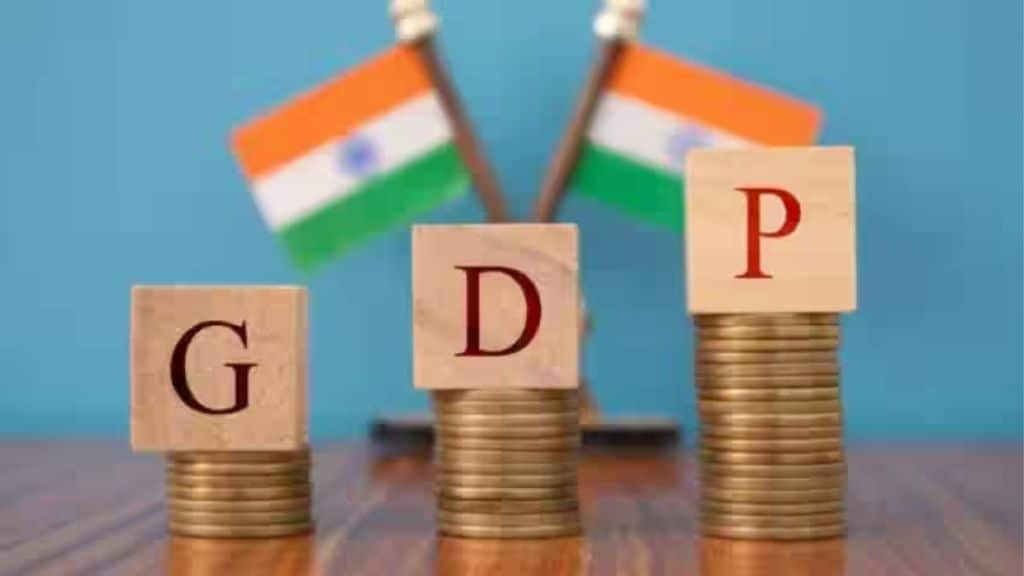India’s Gross Domestic Product (GDP) for the fourth quarter of FY24 surged by 8.2%, amounting to Rs 47.24 lakh crore, surpassing earlier estimates by the National Statistical Office (NSO) which projected a growth of 7.3%. The nominal GDP expanded by 9.6% in FY24, compared to 14.2% in FY23, as reported by the Ministry of Statistics and Programme Implementation (MoSPI).
India is the fifth largest economy in the world GDP rankings list after USA, which is first, followed by China, Germany and Japan.
The Gross Value Added (GVA), which measures the value generated by various sectors of the economy, also saw robust growth, increasing by 7.2% in FY24, driven by a 9.9% growth in manufacturing and a 7.1% growth in the mining sector. Real GVA and GDP growth rates for the fourth quarter stood at 6.3% and 7.8%, respectively.
The real GDP at Constant Prices reached Rs 173.82 lakh crore in FY24, marking an 8.2% growth over FY23. Nominal GDP at Current Prices for FY24 was estimated at Rs 295.36 lakh crore, up from Rs 269.50 lakh crore in FY23, reflecting a 9.6% growth.
The International Monetary Fund (IMF) has raised India’s GDP growth forecast for FY25 to 7% in July 2024, citing improved private consumption, particularly in rural areas, as a key driver. India’s current GDP for FY24 is estimated at $3.9 trillion, with a growth rate of 8.2%, outpacing major economies like Russia, the US, China, and Japan according to IMF data.
In its latest edition of the World Economic Outlook, the IMF maintained its projection for the next financial year with a slower growth rate of 6.5 percent.
Meanwhile, ahead of the Union Budget, the Reserve Bank of India (RBI) has upgraded its growth forecast for the fiscal year 2024/25 to 7.2%, up from 7%, driven by a resurgence in private consumption, robust investment, and a rebound in exports.
A look at India’s GDP from 2019
What is GDP – An Explainer
Gross Domestic Product (GDP) is a vital measure that indicates the overall economic health and size of a country. It represents the total value of all goods and services produced within a country’s borders over a specific period, typically a year. GDP is crucial because it helps us understand the economic performance and growth trends of a nation.
For example, if India’s GDP grows by 7% in a year, it means the economy has expanded by that percentage compared to the previous year. A higher GDP growth rate often correlates with increased job opportunities, higher incomes, and improved living standards for the population.
Governments and policymakers use GDP to make decisions about economic policies, such as taxes and spending. It helps them gauge economic performance, identify areas of strength or weakness, and plan strategies for sustainable growth and development. Understanding GDP is important for students as it provides insights into how economies work, how wealth is generated and distributed, and the impact of economic policies on people’s lives.
What sectors drive India’s GDP?
India’s GDP is primarily driven by three main sectors. They are services, industry, and agriculture, which complement each other in India’s economic structure, contributing to overall growth, employment generation, and socio-economic development. While the services sector dominates in terms of GDP contribution, the industry and agriculture sectors play crucial roles in providing essential goods, infrastructure, and livelihoods across urban and rural areas of the country.
What was said about GDP in interim Budget?
In the Interim Budget presented on February 1, Finance Minister Nirmala Sitharaman said that the government has estimated a nominal GDP growth rate of 10.5% in 2024-25 (i.e., real growth plus inflation).

